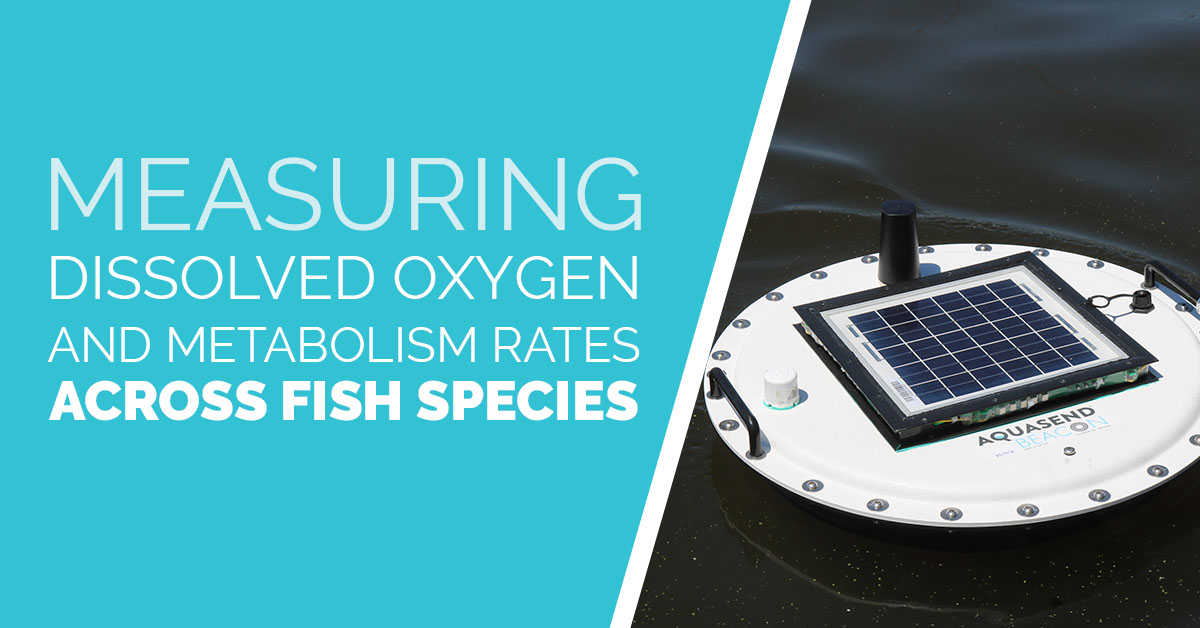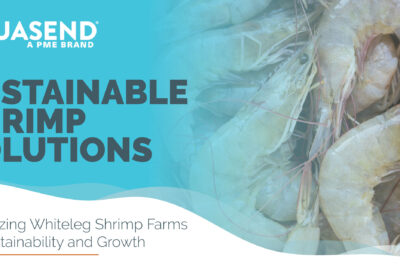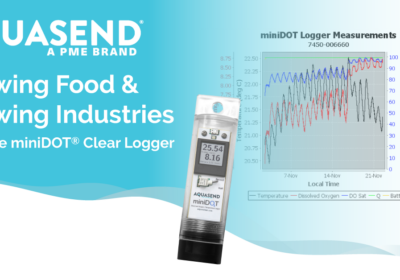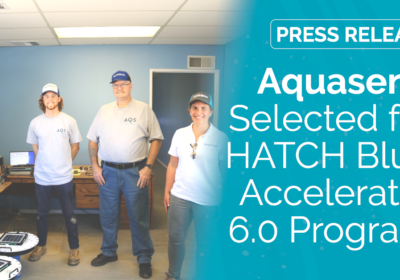Measuring Dissolved Oxygen and Metabolism Rates Across Fish Species

Upgrading to the Aquasend Beacon’s® real-time data technology has proven to be a business intelligence asset, as well as a farm operational tool. The Beacon’s data allows farmers to better understand how metabolism rates differ across species of fish. This gives aquaculture farmers valuable insight that can help them make decisions regarding stocking levels and overall production outcomes. When researching the effect that high stocking densities have on the welfare of intensively farmed fish, Louise Baldwin of the University of the West of Scotland compared the findings of multiple studies on various fish species including the red porgy, winter flounder, Atlantic salmon and rainbow trout. During her research, she determined that acceptable stocking density levels vary greatly between fish species. It is crucial that farmers stay in-the-know about the exact needs of their fish.
Feeding Schedules and Stocking Density
Two of the costliest aspects of operating an aqua farm are feed for the farm’s stock, and space for the fish to live. There is a specific science behind feeding schedules. Depending on the species of fish, even the time of day the fish are fed can influence the success of high stocking densities. Optimal feeding times can be determined by dissolved oxygen (DO) levels and fish behavior. Each species has a certain oxygen level range in which they have an increased appetite. By feeding inside these levels, fish farmers can ensure they are getting the most out of their fish feed while also increasing average fish size. By placing an Aquasend Beacon® in each tank or pond, it’s real-time DO data can assist farmers in determining exactly what these optimal feeding windows are across fish species.
Stocking Density and Water Quality
Real-time data helps aqua farms measure the dissolved oxygen levels of metabolism and determine acceptable stock density levels. Stock density refers to the number of fish that live in each tank, pond or raceway at an aqua farm. By increasing stock density levels, farmers run the risk of over stocking, and having fish that metabolize dissolved oxygen too quickly. The more heavily stocked a tank or pond is, the more sporadic the water quality levels can be. Water quality levels that are too low can result in fish kills, which are costly in both time and money.
A lack of adequate water quality can also lead to fish aggression and other health issues. During a study of the growth rates of winter flounder based on stocking density, scientists E. Fairchild and W.H. Howell regularly took water quality measurements such as temperature and DO from controlled aquafarming tanks at different stocking densities over time. Their findings show that the higher stocking density of certain species, the higher the risk of fish kills and high mortality rates was.
To confidently increase stock density, it is crucial to understand exact water quality levels of your tanks and ponds at all times. This helps to avoid potential fish kills and product loss. The Aquasend Beacon® allows fish farmers easy access to DO and temperature data 24/7, to make stocking and feeding decisions with confidence.
Benefits of Real-Time Data
Adjusting feeding schedules and stock density levels can be quite risky, especially when handling large numbers of fish at one time. The Beacon’s cutting-edge technology offers farmers peace of mind and allows them the freedom to adjust their operating styles to fit their financial needs, without endangering the health of their fish.
To learn more about the Aquasend Beacon®, watch our product video. Questions? Contact us on our website. We are happy to help.
References:
Related Posts

Beacon® Provides Sustainable Solutions for Whiteleg Shrimp Production
When considering the global impact of farmed aquatic animals, whiteleg shrimp (Litopenaeus vannamei), stand out…

Growing Food & Growing Industries with the miniDOT® Clear Logger
From the dawn of civilization, most agricultural practices have hinged on a few simple ingredients…

Aquasend Selected for HATCH Blue Accelerator 6.0 Program
NEWS RELEASE October 19, 2023 FOR IMMEDIATE RELEASE Contact Information: Audrey Roberts, Public Relations Manager…